Figure
Time : 2013/12/11 Place : Takao Renaissance Association and Xin Bin
Street
Q: Can you introduce Hamasen?
A: There was land reclamation a hundred year ago. The land in Hamasen and the salt farm were appeared because of the reclamation.
Taiwan was dominated by Japan and influenced by Meiji Restoration. The skill of road construction was brought in from the west; therefore the roads in Taiwan were organized. Drinking running water is another way influenced by Japanese.
Hamasen is the first modernized place in Kaohsiung. Many facilities, such as constructions, running water, police office and so on, came from here.
Now, the city government wanted to turn the houses here into parking space. People have been living here since Japanese domination period. They think it is worth preserved so they organize a non-profit organization to speak with the government.
There are many non-profit organizations gathering people’s opinions from different aspects. Many countries’ policies are implemented after non-profit organizations’ and government’s discussion.
We hope we can pass down the stories based on the history and culture of Kaohsiung. The house is like a book. Only if we keep the book, we have the chance to pass down the story. Those are things we believe and put efforts on.
Q: What make you as a team?
We knew the information one year ago. Many friends had paid attention on it, such as the preservation of an old house. There is a member concerning about it for long time.
Q: Where is the old cinema you have mentioned?
A:In Yenchen district, there were 22 cinemas 60 years ago. We can assume that people here must earn a lot of money so they can go to the movie. In the past, only one item was sold in a store, so Yenchen district was like a shopping mall. We can still see those shops.
Q: how do you select your meeting space?
A:You can see the 90-year-old house. It has been survived from three earthquakes after we moved in. It was a warehouse in the past. The decoration still remains well. We can still see the name of it.
Japanese built the house after they had a comprehensive plan. The house had good ventilation. It’s the earliest city plan. Nowadays, the construction trends are green buildings. Houses built in the past were green buildings. We hope the following generation can see them not only from the book.
Q: How many old house remain in Hamasen?
A: There are around 10 houses in this area. There are more at Hamasen. They are reconstructed. The one wasn’t reconstructed belonged to the government.
Q: How big is Hamasen?
A: It belongs to Gushan district in administration. The side near the museum belongs to the northern Gushan. The side near the harbor belongs to southern Gunshan.
Q: Can you tell us the history of Hamasen?
A:In order to transport sugar to the harbor, the reclamation is needed for building the rail. Because the railway is close to the sea, it’s called Binshen. In Japanese, it’s called Hamasen. The real meaning is the coast line.
We collected a lot of old pictures, in order to preserve this area. It can prove your family really live here. It can also make people clear about scenes in the past.
Each building has its own story. If I have the chance, I can introduce it for students. Here are the pictures painted by members after learning from the community college.
Now, there are woodworking classes every Saturday and Sunday. Students are from different field. After they learned the skills, they can help fixing the old houses. Some of the woods are recycled. It can help reduce the cost.
There are some pictures of old constructions at the back because residents wanted to apply for compensation after the flood in 1977. There are some modification of buildings nowadays.
Q: What activates do you hold?
A: We hold the lectures sometimes. We also hold guide tours and a craft market certain times per month.
Q: Did Chijin Island exist after Japanese came?
A:It should be earlier. The reason why mullet roe is Kaohsiung’s special product is that mullet was full of the near coast in the past. Fishers saw the place as a relaxing space. They built a factory to take a rest. After certain of period, they found here was good for living, so they decided to settle down. Then, some missionary came here. Chihao church is a proof.Student’s opinion
(Wan Lin)We went to Takao Renaissance Association today. Director Xie told us a lot of things. I learned the history of Hamasen. There was a rail called Binshen. Japanese called it “Hamasen” ; therefore the name of the area became Hamasen. I think there is good to visit.
(Nancy) We went to Takao Renaissance Association again. The guide told us a lot about Hamasen. I remember how Japanese make chocolate. It is funny.
(LunYa)We took MRT to Takao Renaissance Association today. We spent some time on transportation. When we got there, Mr. Xie told us a lot about Hamasen. We learned a lot today.
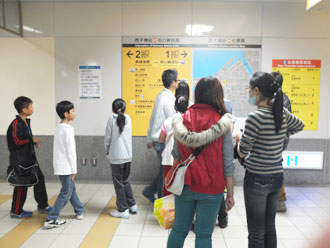 |
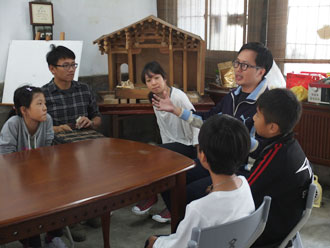 |
 |
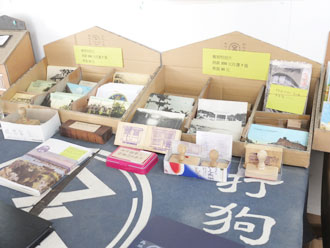 |
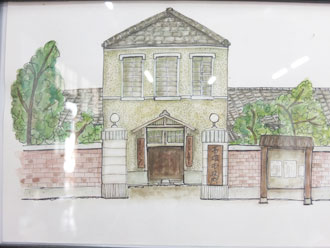 |
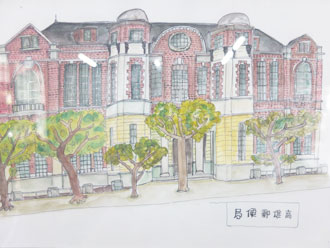 |
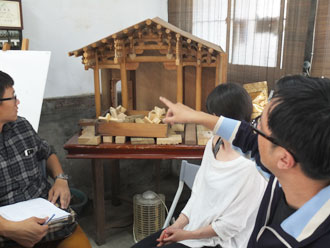 |
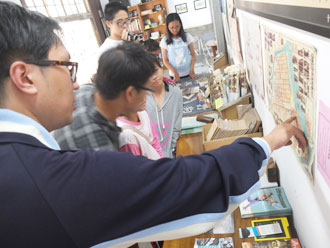 |
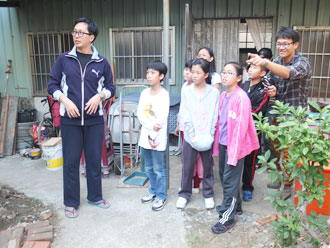 |
 |








